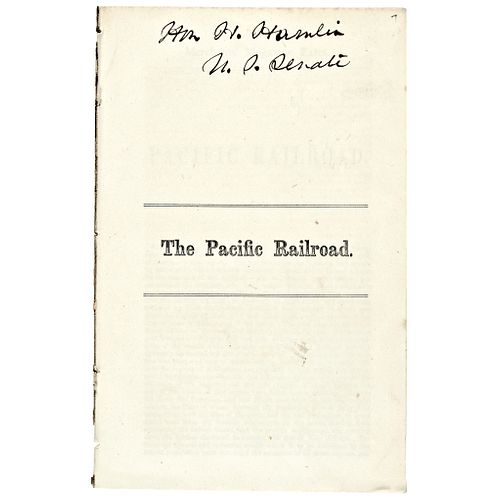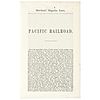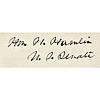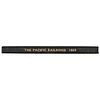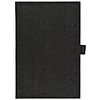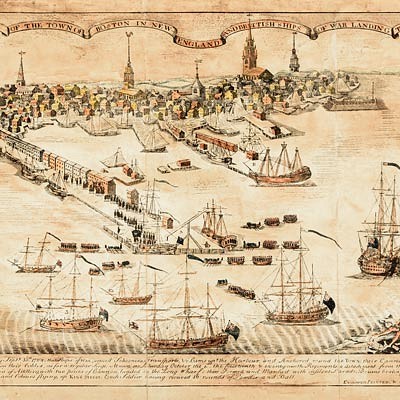1860 Imprint HANNIBAL HAMLINs Personal Signed Copy of THE PACIFIC RAILROAD !
Lot 40
Categories
Estimate:
$4,000 - $5,000
Absentee vs Live bid
Two ways to bid:
- Leave a max absentee bid and the platform will bid on your behalf up to your maximum bid during the live auction.
- Bid live during the auction and your bids will be submitted real-time to the auctioneer.
Bid Increments
| Price | Bid Increment |
|---|---|
| $0 | $10 |
| $200 | $20 |
| $300 | $25 |
| $500 | $50 |
| $1,000 | $100 |
| $2,000 | $200 |
| $3,000 | $250 |
| $5,000 | $500 |
| $10,000 | $1,000 |
| $20,000 | $2,000 |
| $30,000 | $2,500 |
| $50,000 | $5,000 |
| $100,000 | $10,000 |
| $200,000 | $20,000 |
| $300,000 | $25,000 |
| $500,000 | $50,000 |
About Auction
By Early American History Auctions
Mar 20, 2021
Set Reminder
2021-03-20 12:00:00
2021-03-20 12:00:00
America/New_York
Bidsquare
Bidsquare : Autographs-Colonial-Political-Americana
https://www.bidsquare.com/auctions/early-american-history-auctions/autographs-colonial-political-americana-6509
330 Lots of Rare, Historic Autographs, Americana, Civil War Era, George Washington, Abraham Lincoln, Slavery & Black History, Revolutionary War Era, Colonial America, Federal Period, War of 1812, Colonial Currency, Indian Peace Medals & more... Early American History Auctions auctions@earlyamerican.com
330 Lots of Rare, Historic Autographs, Americana, Civil War Era, George Washington, Abraham Lincoln, Slavery & Black History, Revolutionary War Era, Colonial America, Federal Period, War of 1812, Colonial Currency, Indian Peace Medals & more... Early American History Auctions auctions@earlyamerican.com
- Lot Description
Autographs
"Hon H. Hamlin U.S. Senate" Signed Personal Copy of "THE PACIFIC RAILROAD. 1860" Proposed Transcontinental Railroad Imprint, Abraham Lincoln's VP
HANNIBAL HAMLIN (1809-1891). 15th Vice President of the United States (1861-1865), serving under President Abraham Lincoln during the American Civil War as the First Vice President from the Republican Party, Hamlin served in the United States Senate, the House of Representatives and as the 26th Governor of Maine.
1860-Dated. HANNIBAL HAMLIN Signed, "THE PACIFIC RAILROAD. 1860" Remarkable Historic Original Imprint regarding the Transcontinental Railroad, Choice Crisp Extremely Fine.15th Vice President of the United States (1861-1865), serving under President Abraham Lincoln during the Civil War, Hannibal Hamlin's Personal Signed Copy of this original Imprint entitled, "The Pacific Railroad." This important Imprint is boldly Signed at top of title page, "Hon H. Hamlin - U. S. Senate." This Imprint measures 5.5" x 8.5" and has 14 pages plus a blank leaf, disbound and is quite fresh and very clean, presented within a modern cloth chemise and slipcase. The custom black slipcase has prominent gilt printed text being Titled, "THE PACIFIC RAILROAD. 1860".
This historic Pamphlet discusses the proposed Transcontinental Railroad. Hannibal Hamlin was the longtime U.S. Senator from Maine who was picked to be Abraham Lincoln's Presidential Campaign running mate in the critical pre Civil War election of 1860. Hannibal Hamlin served as Vice President of the United States until being replaced on the 1864 Republican Presidential Ticket for Vice President by Andrew Johnson.
In 1862, the "Pacific Railroad Act" chartered the Central Pacific and the Union Pacific Railroad Companies, and tasked them with building a Transcontinental Railroad that would link the United States from east to west. Over the next seven years, the two companies would race toward each other from Sacramento, California on the one side and Omaha, Nebraska on the other, struggling against great risks before they met together and linked the two rail systems at Promontory, Utah on May 10, 1869. It actually opened for through traffic on May 10, 1869, with the historic ceremonial driving of the "Last Spike" (later often called the "Golden Spike") with a silver hammer at Promontory Summit.
The First Transcontinental Railroad (known originally as the "Pacific Railroad" and later as the "Overland Route") was a 1,907-mile contiguous railroad line constructed in the United States between 1863 and 1869 west of the Mississippi and Missouri Rivers to connect the Pacific coast at San Francisco Bay with the existing eastern U.S. rail network at Council Bluffs, Iowa.
The First Transcontinental Railroad (known originally as the "Pacific Railroad" and later as the "Overland Route") was a 1,907-mile contiguous railroad line constructed in the United States between 1863 and 1869 west of the Mississippi and Missouri Rivers to connect the Pacific coast at San Francisco Bay with the existing eastern U.S. rail network at Council Bluffs, Iowa.
The rail line was built by three private companies largely financed by government bonds and huge land grants: the original Western Pacific Railroad Company between Oakland/Alameda and Sacramento, California (132 miles), the Central Pacific Railroad Company of California eastward from Sacramento to Promontory Summit, Utah Territory (U.T.) (690 miles), and the Union Pacific westward to Promontory Summit from the road's statutory Eastern terminus at Council Bluffs on the eastern shore of the Missouri River opposite Omaha, Nebraska (1,085 miles).
Opened for through traffic on May 10, 1869, with the ceremonial driving of the "Last Spike" (later often called the "Golden Spike") with a silver hammer at Promontory Summit, the road established a mechanized transcontinental transportation network that revolutionized the settlement and economy of the American West by bringing these western states and territories firmly and profitably into the "Union" and making goods and transportation much quicker, cheaper, and more flexible from coast to coast.
Our Auction Contents:
Black History & Slavery: (Lots 1 - 63)
Abraham Lincoln Related: (Lots 64 - 74)
Historic Autographs: (Lots 75 - 235)
Colonial America: (Lots 236 - 261)
Revolutionary War: (Lots 262 - 304)
George Washington Related: (Lots 305 - 306)
Early American Guns & Weapons: (Lots 307 - 318) - Shipping Info
-
Early American provides in-house worldwide shipping. Please contact us directly if you have questions about your specific shipping requirements.
-
- Buyer's Premium



 EUR
EUR CAD
CAD AUD
AUD GBP
GBP MXN
MXN HKD
HKD CNY
CNY MYR
MYR SEK
SEK SGD
SGD CHF
CHF THB
THB